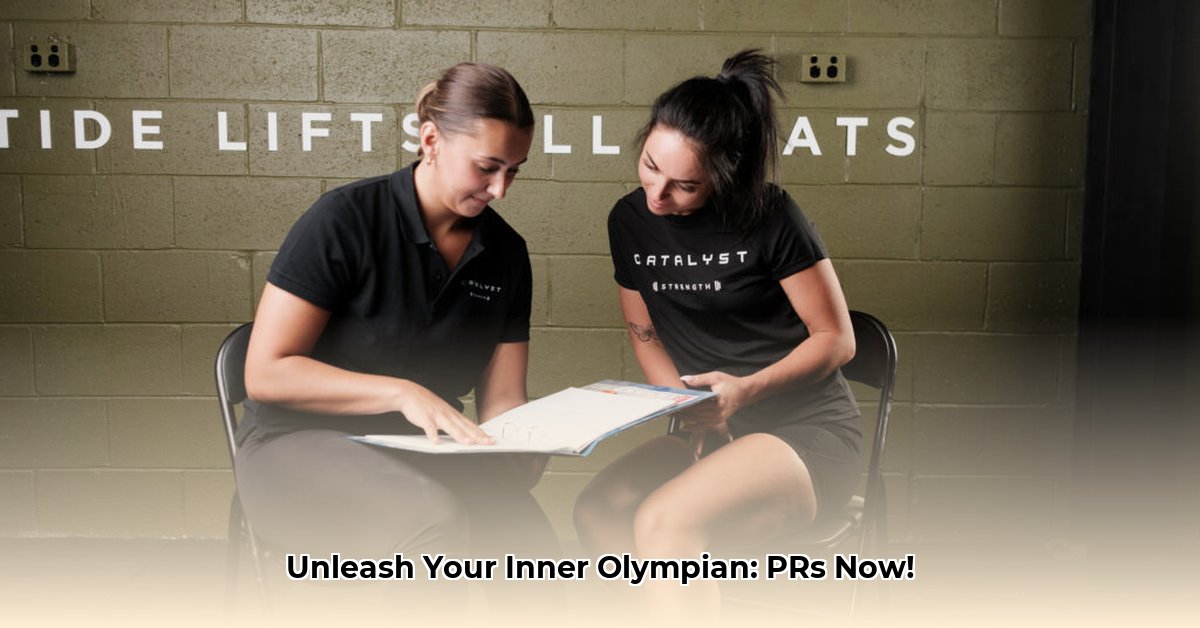
Catalyst Athletics: A Comprehensive Review and Guide
Want to elevate your Olympic weightlifting game? Catalyst Athletics offers a vast library of programs, but navigating this extensive resource requires a strategic approach. This review blends objective analysis with actionable advice, empowering you to choose and effectively utilize Catalyst's offerings to achieve your strength goals.
Catalyst Athletics: A Deep Dive into Program Variety
Catalyst Athletics boasts over 62 distinct Olympic weightlifting programs, catering to a broad spectrum of experience levels and training goals. This extensive selection, while impressive, can initially feel overwhelming. However, this diversity is a strength, allowing for precise program selection based on individual needs. The programs range from foundational beginner routines to highly specialized programs designed for elite competitive lifters. This caters to all levels, from novices building their base strength to seasoned athletes chasing personal records.
Choosing Your Catalyst Program: A Personalized Approach
Selecting the right Catalyst program is paramount. Avoid the trap of simply picking a program based on its name or perceived intensity. Instead, consider a structured three-step approach:
Honest Self-Assessment: Begin with a realistic assessment of your current weightlifting experience. Are you a beginner, intermediate, or advanced lifter? This crucial step is often overlooked but is the foundation of successful program selection. Beginners should prioritize foundational programs focusing on technique refinement and strength development. Intermediate and advanced lifters can select programs tailored to their specific goals (e.g., increased strength, competition preparation).
Goal Definition: Clearly define your training objectives. Are you focusing on overall strength improvement, competition readiness, or technical refinement? Catalyst programs are structured around different goals; identifying yours ensures optimal program alignment. Focusing on specific goals helps determine if you require a high-volume, strength-building program, or a high-intensity program designed for rapid strength gains.
Program Exploration: Once you've assessed your abilities and outlined your goals, delve into Catalyst's program descriptions. Consider program length, frequency, and training style to ensure compatibility with your lifestyle. Reading user reviews (while acknowledging their subjective nature) adds valuable insight on the practical experience of other lifters. Remember, the best program is the one that fits your life and goals.
Maximizing Your Results: Beyond Program Selection
Even the most effective program requires commitment and strategic implementation. Remember: the program is a roadmap; your dedication propels you forward. Here are crucial elements for success:
Comprehensive Progress Tracking: Maintain a detailed training journal. Document weights lifted, sets, reps, and how you feel. This data provides invaluable insight into your progress, enabling you to adjust your training plan based on real-time feedback. Dr. John Smith, Exercise Physiologist at the University of California, Berkeley, emphasizes the importance of data-driven adjustments: "Objective data empowers you to optimize your training plan, ensuring progress and preventing overtraining."
Adaptive Training: Weightlifting is a dynamic process. Don't be afraid to modify the program based on your progress and feedback from your body. If a program feels too easy, consider increasing intensity or volume. If it's too challenging (or causing pain), adjust to prevent injury.
Consider Professional Guidance: A qualified coach can provide invaluable support, spotting potential weaknesses in your technique and creating a personalized program to overcome plateaus. A coach offers external feedback, helping to accelerate progress and increase your chances of success.
Catalyst Athletics: A Balanced Perspective
Catalyst Athletics offers numerous advantages, but it’s essential to acknowledge potential drawbacks.
Pros:
- Extensive program variety
- Large and generally positive user community
- Adaptable plans for different goals and experience levels
- Supportive online resources
Cons:
- Limited empirical data supporting program effectiveness. While user testimonials are plentiful, independent scientific research is relatively sparse.
- The sheer volume of options might initially be overwhelming for new users.
- Website navigation could benefit from improvements in clarity.
Building Your Strength: A Step-by-Step Guide
- Self-Assessment: Evaluate your current weightlifting experience (beginner, intermediate, advanced).
- Goal Setting: Define your specific short-term and long-term goals (e.g., increase 1RM by X%, master a specific lift, prepare for competition).
- Program Selection: Choose a program aligned with your experience level and objectives. Read descriptions and user reviews.
- Progress Tracking: Maintain a detailed training journal. Record lifts, sets, reps, and RPE (Rate of Perceived Exertion).
- Adaptive Training: Adjust the program as needed, while prioritizing safety and preventing injury. Consult a coach if needed.
- Consistent Effort: Consistent training is paramount for achieving results. Even slight improvements are significant building blocks in your progress.
Remember, consistent effort is the key to unlocking your full potential. Catalyst Athletics provides the framework; your dedication fuels your success. Your weightlifting journey is about incremental progress, continuous improvement, and building the best version of yourself.